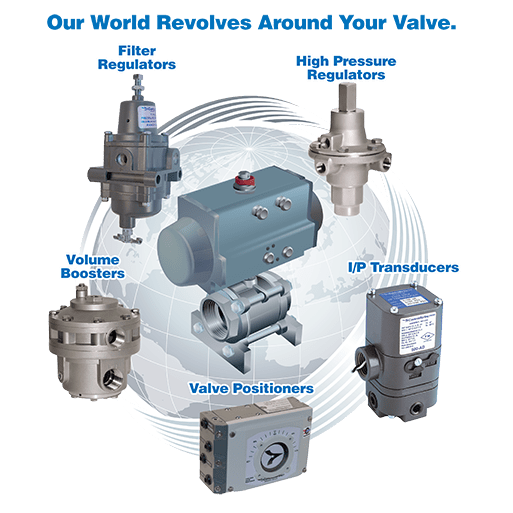How Control Valves Influence Power Effectiveness in Industrial Settings

Maximize Power Savings and Comfort With Advanced Structure Automation Controls
In the world of modern-day design and center management, the assimilation of innovative building automation controls stands as an essential advancement. The merging of innovation and sustainability has birthed a brand-new age where power performance, comfort optimization, and functional streamlining are no more achievable facts yet far-off aspirations. By using the power of automation, buildings can adjust, react, and advance in manner ins which were once unbelievable. The capacity for significant energy cost savings and enhanced comfort is not simply an opportunity however a promise waiting to be satisfied. This paradigm change in structure monitoring holds the key to opening a world where ecological conscientiousness and resident health harmoniously exist together within the walls of our frameworks.
Power Performance Benefits
Power performance advantages can dramatically lower energy consumption and operational costs in buildings. Energy-efficient systems, such as innovative building automation controls, can enhance the use of resources like air conditioning, lights, and home heating, leading to lower energy expenditures over time.
Furthermore, improved energy performance can extend the lifespan of building equipment and systems. By running more successfully, heating and cooling systems, lighting fixture, and other building elements experience less damage, causing lowered maintenance and replacement prices. Additionally, energy-efficient structures usually regulate higher home values and rental prices, providing lasting monetary advantages to owners.
Additionally, energy efficiency can improve resident convenience and productivity. Correctly controlled indoor environments with optimum lights and thermal conditions develop a more conducive and pleasant office, resulting in improved staff member fulfillment and efficiency. In general, the energy effectiveness advantages connected with advanced building automation controls are diverse, encompassing price savings, environmental stewardship, and owner well-being.
Improved Convenience Control
Enhancing comfort control in building environments requires a sophisticated integration of innovative automation systems for optimum occupant health. By making use of innovative building automation controls, facilities can tailor the indoor environment to satisfy the certain needs and choices of passengers. control valves.
Enhanced comfort control exceeds basic temperature adjustments. It consists of functions such as personalized setups, occupancy sensing units, and natural light usage to produce a dynamic and receptive setting. By incorporating these innovative controls, structures can not only boost comfort yet additionally improve power efficiency by maximizing system operations based on real occupancy and use patterns. Ultimately, prioritizing occupant convenience through sophisticated automation systems causes a more pleasurable and much healthier indoor setting.
Functional Performance Improvements

Moreover, the application of real-time surveillance and analytics devices enables building drivers to recognize energy ineffectiveness and operational abnormalities promptly. By constantly keeping track of power use patterns and system performance metrics, changes can be made in real-time to optimize energy usage and make certain peak functional efficiency. control valves. In addition, integrating need feedback techniques right into structure automation controls can further improve operational effectiveness by dynamically readjusting energy usage based on grid problems and prices signals
Indoor Environment Optimization
Efficient indoor climate optimization is a basic facet of structure automation controls, ensuring passengers' convenience and health while maximizing energy savings. By utilizing sophisticated sensors and controls, developing automation systems can constantly keep track of and adjust temperature, humidity degrees, air top quality, and ventilation to create an optimal interior setting. Preserving comfy and regular problems not only enhances owner fulfillment yet likewise increases productivity and total wellness.
Indoor climate optimization likewise plays a crucial function in power performance. By fine-tuning air flow, cooling, and heating systems based upon real-time information and occupancy patterns, developing automation controls can significantly reduce power usage - control valves. Implementing approaches such as demand-controlled ventilation and thermal zoning can help lessen energy waste while making sure that each area of the structure receives page the required conditioning.

Lasting Setting Creation
Building automation controls not only maximize indoor environment conditions for power performance and resident convenience yet additionally lay the foundation for developing a lasting setting via strategic administration of sources and systems. By incorporating sophisticated building automation modern technologies, such as sensing units, actuators, and intelligent software program, centers can keep track of and readjust power use in real-time to reduce waste and lower their carbon footprint. These systems enable predictive maintenance, identifying potential concerns before they escalate and enhancing tools efficiency to enhance long life and effectiveness.
Moreover, sustainable atmosphere production prolongs beyond energy management to incorporate water preservation, waste reduction, and interior air top quality improvement. Building automation controls can control water usage, detect leaks, and make sure correct garbage disposal methods, adding to total sustainability initiatives. Furthermore, by regulating and keeping an eye on ventilation and purification systems, these technologies boost owner wellness and efficiency while lowering power intake related to a/c operations.
Conclusion
In final thought, progressed building automation regulates offer considerable advantages in regards to energy savings, comfort control, operational performance, interior environment optimization, and creating a a fantastic read lasting atmosphere. By implementing these controls, buildings can attain optimum performance while decreasing power consumption and boosting occupant comfort. It is apparent that the use of advanced automation modern technology is important in improving building performance and developing an extra lasting future.
Power effectiveness benefits can significantly lower power consumption and functional costs in buildings. Generally, the power efficiency benefits linked with innovative building automation controls are multifaceted, incorporating price financial savings, ecological stewardship, and occupant health.
Furthermore, integrating demand response approaches into building automation controls can even more enhance functional performance by dynamically adjusting energy usage based on grid problems and rates signals.
Building automation regulates not just enhance interior climate look at more info problems for energy performance and passenger comfort however likewise lay the foundation for creating a lasting atmosphere through critical management of sources and systems.In conclusion, advanced structure automation controls offer significant advantages in terms of energy cost savings, convenience control, functional efficiency, interior environment optimization, and developing a sustainable environment.